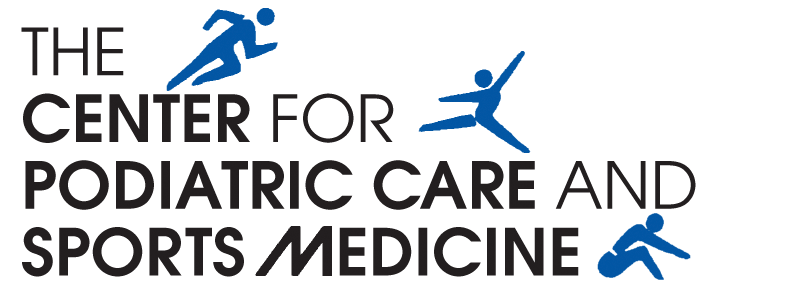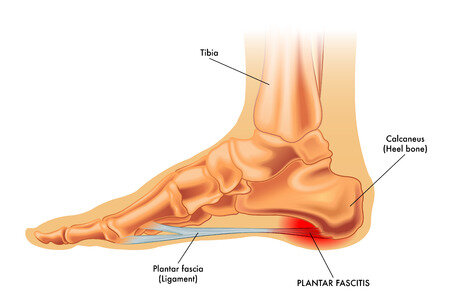Your Heel Pain May Be Caused by Plantar Fasciitis
If you’ve been more of a couch potato and one of your New Year’s resolutions is to get more exercise, good for you! Aerobic exercise helps reduce your risk of obesity, heart disease, high blood pressure, stroke, type 2 diabetes and some types of cancer. Weight-bearing exercise like walking and running can also help lower your risk of osteoporosis.
Symptoms of Plantar Fasciitis
For those unused to exercising, it’s very important to get your doctor’s approval and to start slowly to avoid injury. One common overuse injury among athletes who try to do too much too soon is heel pain caused by plantar fasciitis. The plantar fascia is a thick band of tissue that runs along the bottom of your foot, connecting your toes to your heel bone. Plantar fasciitis can be caused by repetitive strain injury to this ligament from excessive walking, jumping or running or wearing inadequate footgear.
If you have injured the plantar fascia, you typically will feel a stabbing pain near your heel on the bottom of your foot. The pain is worst first thing in the morning when arising from bed and eases somewhat with activity but increases later in the day. You may also have numbness or burning in the area.
Treating Heel Pain and Plantar Fasciitis
At our practice, we treat heel pain conservatively with anti-inflammatory medication, cortisone injections and exercises. Custom-fitted orthotics with foot support can halt the ligament damage.
We also use state-of-the-art Tenex Health treatments to deal with plantar fasciitis. This minimally-invasive technology is an effective treatment for chronic pain. The precisely-targeted high-frequency vibrations remove the damaged portion of the plantar fascia without the need for conventional surgery.
Preventing Plantar Fasciitis
Ask us if custom orthotics can help your foot structure and gait.
Maintain a healthy weight to ease pressure on the bottom of your feet.
Replace athletic footwear often and select shoes with good support.
Avoid high-impact exercises like running and jumping. Try low-impact exercises such as swimming or bicycling.
Always stretch calves and feet every day and especially after workouts.
We Can Help Heal Your Heel Pain
If you have heel pain or pain from hammertoes or any other foot or ankle condition or have suffered any type of foot or ankle injury, please call our board-certified podiatrists Dr. Jonathan M. Levy, Dr. Nadia F. Levy or Dr. Diane M. Castro at Park 56 Podiatry. Our professional staff offers expert podiatry services at our Manhattan office at 120 East 56th Street. Please call us today at (212) 980-6487 to schedule your appointment.


